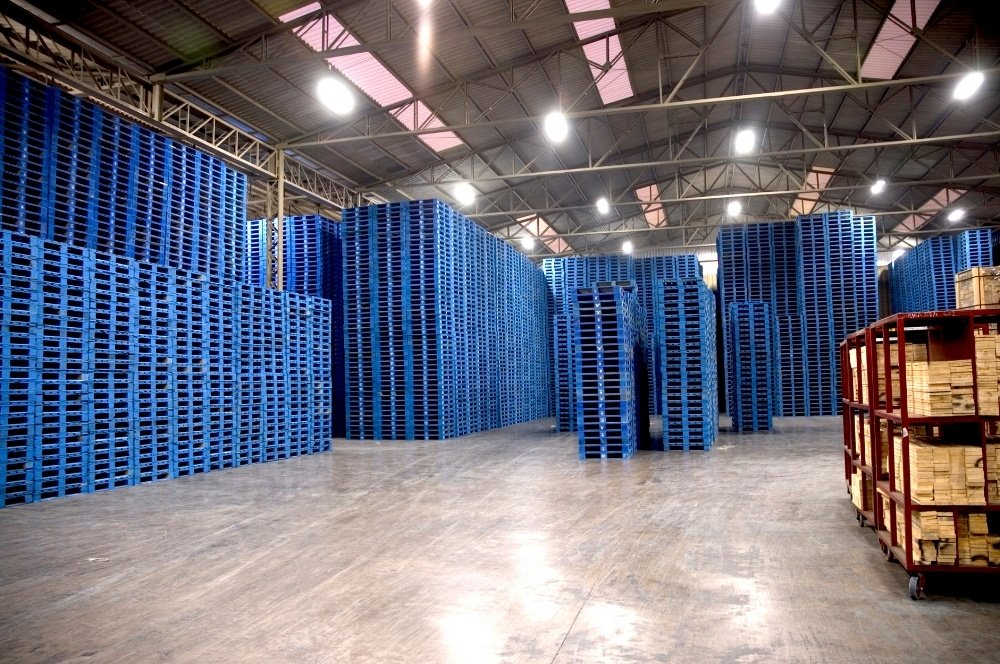In the supply chain, the pallet footprint is a term which refers to the length and width of a pallet. The most common way to describe a footprint is to start with the distance of the wooden stringers or the stringer boards (on block pallets), which underlie and run perpendicular to the deck boards, followed by the measure of the deck boards. In the North American consumer goods industry, for example, the standard size today is the 48×40-inch.
In other parts of the world, there are other standard footprints related to the movement of consumer goods. In the UK, South Africa, parts of Asia and other emerging markets, the 1200×1000-mm pallet is the standard. In continental Europe, the same holds true for the 800×1200-mm (Euro pallet) footprint, which evolved after World War 2 as a practical size to use in European rail cars. In Australia, the 1165×1165-mm pallet is the accepted size. The 1100×1100-mm is also popular in Asia. Together, the sizes listed above comprise five of the six pallet sizes approved by the International Organization for Standardization (ISO), along with the 42×42-inch pallet, which is used internationally.
Why doesn’t the world just convert to one size and end all of this international confusion? As it turns out, history is important. Material handling systems and supply chains have evolved around particular pallet sizes before the growth of global trade, and to change them now would become prohibitively expensive. For this reason, we are more likely to see emerging nations with new logistics infrastructure look to standardize internationally – typically onto the 1200x1000mm.
Here are five reasons to think about pallet footprints:






